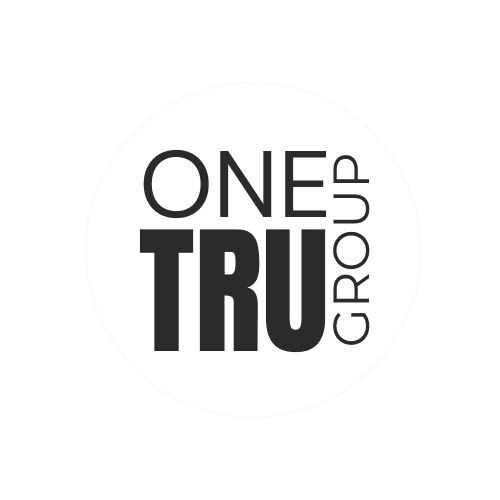Defining OKRs and KPIs
Understanding what is a difference between OKR and KPI is essential for organizations looking to enhance their performance measurement strategies. OKRs, or Objectives and Key Results, serve as a goal-setting framework that aligns teams’ efforts with the organization’s vision. They emphasize qualitative objectives with quantitative outcomes, fostering a culture of transparency and focus. An example of an OKR might be, “Increase customer satisfaction,” with key results such as “Achieve a net promoter score of 80” or “Reduce response time to customer inquiries to under 1 hour.” This goal-setting methodology encourages teams to stretch their capabilities beyond typical performance levels.
On the other hand, KPIs, or Key Performance Indicators, are metrics used to evaluate how effectively an organization is achieving its key business objectives. KPIs tend to be more quantitative and often serve as a benchmark for success. For instance, a KPI for the same organization could be “Monthly revenue growth of 10%.” This metric provides a clear, measurable indicator of financial performance, which organizations can track over time to gauge success and make data-driven decisions.
Both OKRs and KPIs play distinct but complementary roles within the framework of performance management. While OKRs focus on setting aspirational goals that encourage innovation and engagement, KPIs provide a means of monitoring ongoing performance against set standards. Organizations may choose to implement OKRs when aiming for significant change and transformational goals, whereas KPIs are typically employed to maintain operational performance and ensure alignment with broader strategic objectives. Recognizing what is a difference between OKR and KPI is crucial for effectively determining which methodology may be better suited for a specific organizational context.
Key Differences Between OKRs and KPIs
Understanding the differences between OKRs (Objectives and Key Results) and KPIs (Key Performance Indicators) is crucial for organizations aiming to enhance their performance metrics. The structural differences between these two methodologies play a significant role in how they are utilized. OKRs are characterized by their goal-oriented approach, promoting flexibility and adaptability to changing priorities. Each objective is supported by several key results that provide measurable outcomes, focusing on what success looks like in a given timeframe. In contrast, KPIs serve as fixed indicators that gauge performance against pre-established standards. They are often tied to operational effectiveness and provide a benchmark to evaluate progress over time.
The fundamental focus of these two systems further distinguishes them. OKRs are inherently innovative, encouraging teams to set ambitious goals that challenge the status quo. This inherently fosters a culture of motivation and engagement, aligning the efforts of individuals toward common objectives. Conversely, KPIs frequently emphasize the stability of established processes, measuring how well these processes perform against operational targets. As a result, while KPIs can reflect success in maintaining effective systems, they may lack the inspirational quality that OKRs provide, which can sometimes lead to higher levels of team motivation and clarity.
In terms of measurement philosophy, the way success is evaluated also differs. OKRs allow for a more dynamic assessment, permitting adjustments based on ongoing results and challenges. This contrasts sharply with KPIs, which depend on steady metrics and historical data to make comparisons. By understanding what is a difference between OKRs and KPIs, organizations can leverage the right approach to fit their strategic goals. Ultimately, the choice between these methods may depend on required flexibility versus the need for standardized metrics, impacting organizational performance and growth pathways.
When to Use OKRs or KPIs
Understanding when to utilize Objectives and Key Results (OKRs) or Key Performance Indicators (KPIs) is essential for any organization aiming to enhance performance and align strategic goals. The choice between these two frameworks primarily depends on the specific needs and development stage of the organization.
OKRs are generally more suited for organizations focusing on long-term strategic planning. They are designed to set ambitious goals and inspire teams to achieve significant results. This framework encourages innovative thinking, fosters collaboration, and aligns individual objectives with larger organizational aims. For instance, a tech startup aiming to enter a new market may implement OKRs to challenge its teams to explore uncharted territories and push their limits. In such cases, the objective is to drive growth and adaptability by fostering a mindset of excellence and exploration.
Conversely, KPIs function effectively for tracking immediate performance and operational efficiency. These metrics are typically quantitative, providing clear indicators of how well an organization is performing against predefined benchmarks. For example, a manufacturing company might utilize KPIs to monitor production output or defect rates, ensuring that day-to-day operations meet industry standards. In situations where rapid data assessment is crucial, KPIs serve organizations by providing actionable insights into current performance, enabling quick decision-making.
Ultimately, many organizations benefit from a blended approach, utilizing both OKRs for long-range direction and KPIs for operational tracking. Each organization must assess its unique requirements to determine which method is more effective in achieving its goals. By carefully considering the scenarios and operational needs, leaders can make informed decisions on what is a difference between OKR and KPI? which is better. This approach can lead to enhanced performance and greater success overall.
Making the Right Choice for Your Organization
Choosing between OKRs (Objectives and Key Results) and KPIs (Key Performance Indicators) is not a one-size-fits-all decision; rather, it necessitates a thorough evaluation of your organization’s unique needs, culture, and strategic goals. Understanding what is a difference between OKR and KPI is crucial, as each framework serves distinct purposes and caters to different aspects of performance management.
To begin, organizations should assess their overall goals. If the aim is to establish a clear set of objectives that not only drive performance but also foster innovation and engagement, implementing an OKR framework may be more beneficial. On the other hand, if the focus is on tracking specific metrics that measure the efficiency and effectiveness of ongoing operations, KPIs would likely be the better choice. Consider what is a difference between OKR and KPI in your context and how each can align with your overarching strategy.
Next, evaluating your organizational culture is essential. If your organization values flexibility and adaptability, OKRs may be more suitable due to their iterative nature. Conversely, in an environment that emphasizes stability and operational excellence, KPIs might resonate better. Involving team members in this evaluation can facilitate a shared understanding of the chosen framework, leading to more effective buy-in and implementation.
Setting measurable goals is another critical component of this process. Consider using SMART (Specific, Measurable, Achievable, Relevant, Time-bound) criteria regardless of whether you opt for OKRs or KPIs. This ensures that your objectives, whether they are aspirational or performance-oriented, maintain clarity and focus. Finally, the integration of selected methods into existing management practices should ensure alignment with broader business objectives while fostering a culture of continuous improvement.
By meticulously considering these factors, organizations can better ascertain whether to adopt OKRs, KPIs, or a hybrid approach, ultimately positioning themselves for success in their strategic initiatives.





